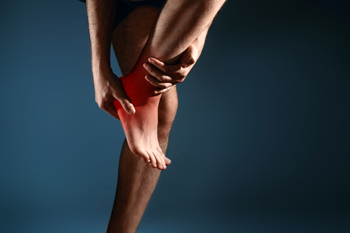 Toenail fungus is a common foot condition among many people. The symptoms are noticeable, and include brittle edges on the toenails, possible separation from the nail and the nail bed, and tenderness. It is caused by a fungus that spreads under the nail, and is often contagious. This type of fungus lives and thrives in warm and moist environments which include public swimming pools, communal showers, and locker rooms. It is beneficial to wear appropriate shoes while in these areas, as this may help to slow down the spread of toenail fungus. If you are afflicted with this condition, it is advised that you consult with a podiatrist who can determine what the best course of treatment is for you.
Toenail fungus is a common foot condition among many people. The symptoms are noticeable, and include brittle edges on the toenails, possible separation from the nail and the nail bed, and tenderness. It is caused by a fungus that spreads under the nail, and is often contagious. This type of fungus lives and thrives in warm and moist environments which include public swimming pools, communal showers, and locker rooms. It is beneficial to wear appropriate shoes while in these areas, as this may help to slow down the spread of toenail fungus. If you are afflicted with this condition, it is advised that you consult with a podiatrist who can determine what the best course of treatment is for you.
If left untreated, toenail fungus may spread to other toenails, skin, or even fingernails. If you suspect you have toenail fungus it is important to seek treatment right away. For more information about treatment, contact one of our podiatrists of Westside Podiatry Center, LLP. Our doctors can provide the care you need to keep you pain-free and on your feet.
Symptoms
- Warped or oddly shaped nails
- Yellowish nails
- Loose/separated nail
- Buildup of bits and pieces of nail fragments under the nail
- Brittle, broken, thickened nail
Treatment
If self-care strategies and over-the-counter medications does not help your fungus, your podiatrist may give you a prescription drug instead. Even if you find relief from your toenail fungus symptoms, you may experience a repeat infection in the future.
Prevention
In order to prevent getting toenail fungus in the future, you should always make sure to wash your feet with soap and water. After washing, it is important to dry your feet thoroughly especially in between the toes. When trimming your toenails, be sure to trim straight across instead of in a rounded shape. It is crucial not to cover up discolored nails with nail polish because that will prevent your nail from being able to “breathe”.
In some cases, surgical procedure may be needed to remove the toenail fungus. Consult with your podiatrist about the best treatment options for your case of toenail fungus.
If you have any questions, please feel free to contact one of our offices located in Liverpool, Camillus, Skaneateles, Oswego, and Cicero, NY . We offer the newest diagnostic and treatment technologies for all your foot care needs.





